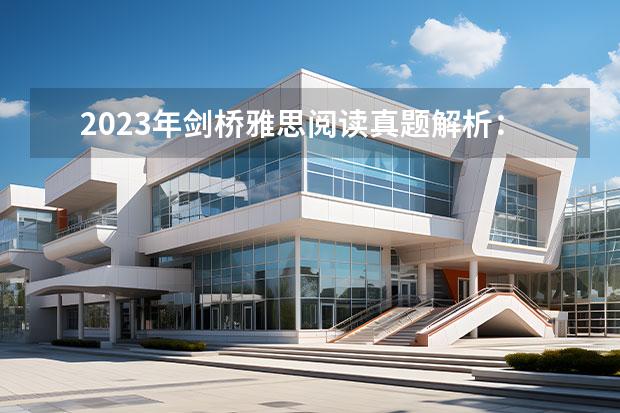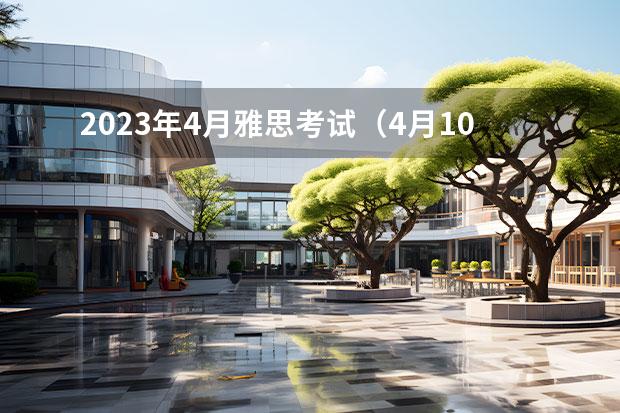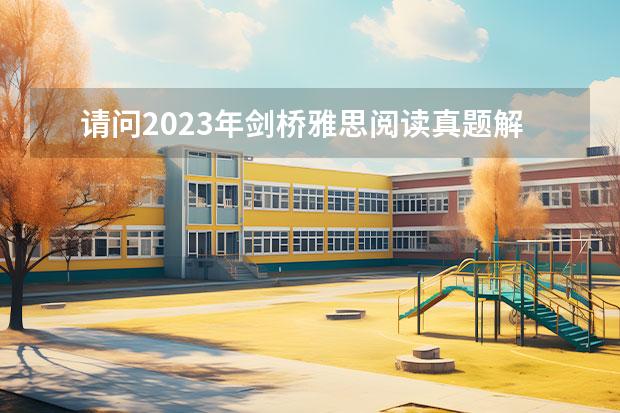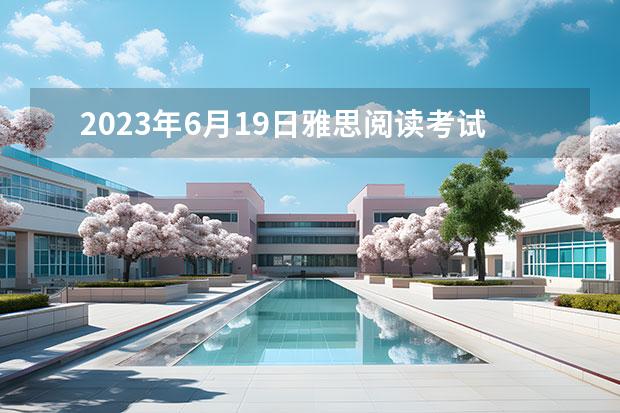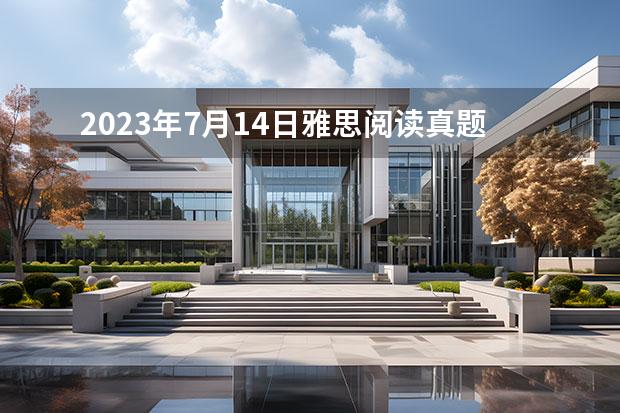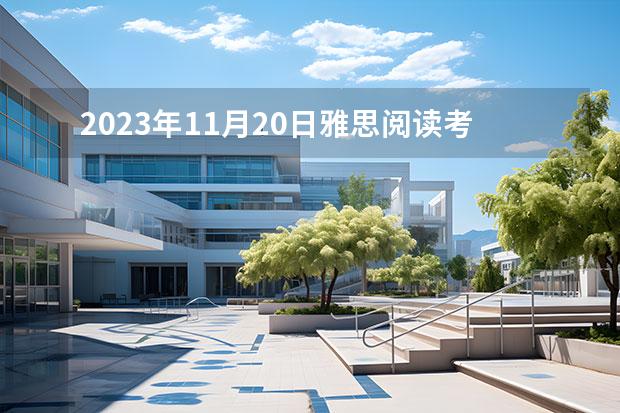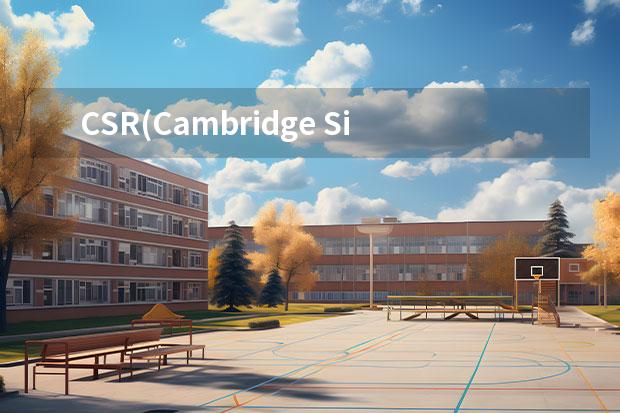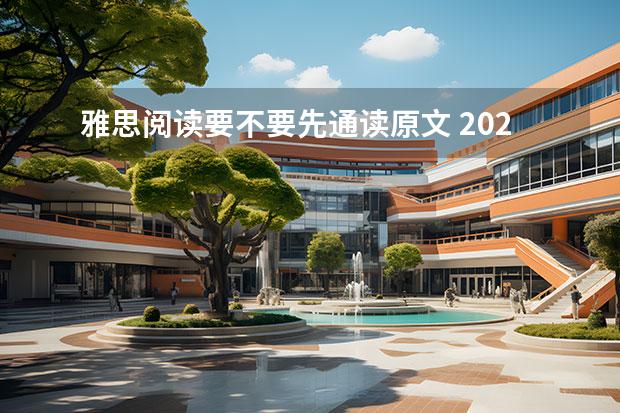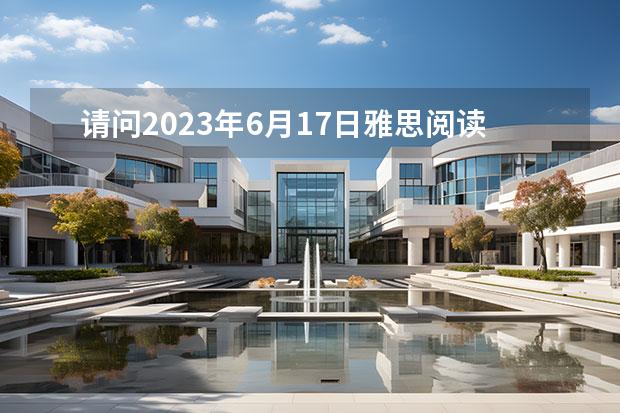今天金博宝188官网小编整理了2023年剑桥雅思阅读真题解析:Thomas Young 英语翻译 雅思阅读相关信息,希望在这方面能够更好的大家。
本文目录一览:
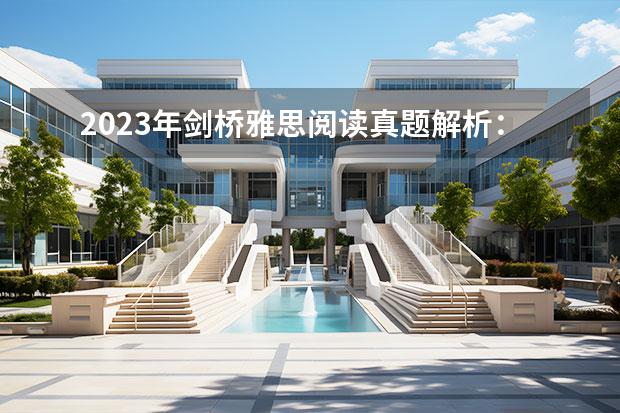
2023年剑桥雅思阅读真题解析:Thomas Young
您好,我是专注留学考试规划和留学咨询的小钟老师。在追寻留学梦想的路上,选择合适的学校和专业,准备相关考试,都可能让人感到迷茫和困扰。作为一名有经验的留学顾问,我在此为您提供全方位的专业咨询和指导。欢迎随时提问!对于雅思考生来说,剑桥雅思阅读题难不难?下面就和小钟老师一起来看看2023年剑桥雅思阅读真题解析:Thomas Young。
Thomas Young
The Last True Know-It-All
A Thomas Young (1773-1829) contributed 63 articles to the Encyclopedia Britannica, including 46 biographical entries (mostly on scientists and classicists) and substantial essays on "Bridge,” "Chromatics," "Egypt," "Languages" and "Tides". Was someone who could write authoritatively about so many subjects a polymath, a genius or a dilettante? In an ambitious new biography, Andrew Robinson argues that Young is a good contender for the epitaph "the last man who knew everything." Young has competition, however: The phrase, which Robinson takes for his title, also serves as the subtitle of two other recent biographies: Leonard Warren's 1998 life of paleontologist Joseph Leidy (1823-1891) and Paula Findlen's 2023 book on Athanasius Kircher (1602-1680), another polymath.
B Young, of course, did more than write encyclopedia entries. He presented his first paper to the Royal Society of London at the age of 20 and was elected a Fellow a week after his 21st birthday. In the paper, Young explained the process of accommodation in the human eye on how the eye focuses properly on objects at varying distances. Young hypothesized that this was achieved by changes in the shape of the lens. Young also theorized that light traveled in waves and he believed that, to account for the ability to see in color, there must be three receptors in the eye corresponding to the three "principal colors" to which the retina could respond: red, green, violet. All these hypothesis were subsequently proved to be correct.
C Later in his life, when he was in his forties, Young was instrumental in cracking the code that unlocked the unknown script on the Rosetta Stone, a tablet that was "found" in Egypt by the Napoleonic army in 1799. The stone contains text in three alphabets: Greek, something unrecognizable and Egyptian hieroglyphs. The unrecognizable script is now known as demotic and, as Young deduced, is related directly to hieroglyphic. His initial work on this appeared in his Britannica entry on Egypt. In another entry, he coined the term Indo-European to describe the family of languages spoken throughout most of Europe and northern India. These are the landmark achievements of a man who was a child prodigy and who, unlike many remarkable children, did not disappear into oblivion as an adult.
D Born in 1773 in Somerset in England, Young lived from an early age with his maternal grandfather, eventually leaving to attend boarding school. He haddevoured books from the age of two, and through his own initiative he excelled at Latin, Greek, mathematics and natural philosophy. After leaving school, he was greatly encouraged by his mother's uncle, Richard Brocklesby, a physician and Fellow of the Royal Society. Following Brocklesby's lead, Young decided to pursue a career in medicine. He studied in London, following the medical circuit, and then moved on to more formal education in Edinburgh, Gottingen and Cambridge. After completing his medical training at the University of Cambridge in 1808, Young set up practice as a physician in London. He soon became a Fellow of the Royal College of Physicians and a few years later was appointed physician at St. George's Hospital.
E Young's skill as a physician, however, did not equal his skill as a scholar of natural philosophy or linguistics. Earlier, in 1801, he had been appointed to a professorship of natural philosophy at the Royal Institution, where he delivered as many as 60 lectures in a year. These were published in two volumes in 1807. In 1804 Young had become secretary to the Royal Society, a post he would hold until his death. His opinions were sought on civic and national matters, such as the introduction of gas lighting to London and methods of ship construction. From 1819 he was superintendent of the Nautical Almanac and secretary to the Board of Longitude. From 1824 to 1829 he was physician to and inspector of calculations for the Palladian Insurance Company. Between 1816 and 1825 he contributed his many and various entries to the Encyclopedia Britannica, and throughout his career he authored numerous books, essays and papers.
F Young is a perfect subject for a biography - perfect, but daunting. Few men contributed so much to so many technical fields. Robinson's aim is to introduce non-scientists to Young's work and life. He succeeds, providing clear expositions of the technical material (especially that on optics and Egyptian hieroglyphs). Some readers of this book will, like Robinson, find Young's accomplishments impressive; others will see him as some historians have - as a dilettante. Yet despite the rich material presented in this book, readers will not end up knowing Young personally. We catch glimpses of a playful Young, doodling Greek and Latin phrases in his notes on medical lectures and translating the verses that a young lady had written on the walls of a summerhouse into Greek elegiacs. Young was introduced into elite society, attended the theatre and learned to dance and play the flute. In addition, he was an accomplished horseman. However, his personal life looks pale next to his vibrant career and studies.
G Young married Eliza Maxwell in 1804, and according to Robinson, "their marriage was a happy one and she appreciated his work." Almost all we know about her is that she sustained her husband through some rancorous disputes about optics and that she worried about money when his medical career was slow to take off. Very little evidence survives about the complexities of Young's relationships with his mother and father. Robinson does not credit them, or anyone else, with shaping Young's extraordinary mind. Despite the lack of details concerning Young's relationships, however, anyone interested in what it means to be a genius should read this book.
Questions 1-7
Do the following statements agree with the information given in Reading Passage 1?
In boxes 1-6 on your answer sheet, write
TRUE if the statement is true
FALSE if the statement is false
NOT GIVEN if the information is not given in the passage
1 “The last man who knew everything” has also been claimed to other people.
2 All Young’s articles were published in Encyclopedia Britannica.
3 Like others, Young wasn't so brilliant when grew up.
4 Young's talents as a doctor are surpassing his other skills.
5 Young's advice was sought by people responsible for local and national issues.
6 Young was interested in various social pastimes.
7 Young suffered from a disease in his later years.
Questions 8-13
Answer the questions below.
Choose NO MORE THAN THREE WORDS AND/OR A NUMBER from the passage for each answer.
8 How many life stories did Young write for Encyclopedia Britannica?
9 What aspect of scientific research did Young do in his first academic paper?
10 What name did Young introduce to refer to a group of languages?
11 Who inspired Young to start the medical studies?
12 Where did Young get a teaching position?
13 What contribution did Young make to London?
文章题目:
Thomas Young—The Last True Know-it All
托马斯·杨——最后一个无所不知的人
篇章结构
体裁人物传记
题目托马斯·杨——最后一个无所不知的人
结构A段:托马斯·杨对百科全书的主要成就
B段:托马斯年轻时的主要成就
C段:托马斯晚年的主要成就
D段:托马斯童年的生活背景及成长经历
E段:托马斯作为自然哲学学者取得的成就
F段: 托马斯在其他领域的成就
G段:托马斯的感情生活
试题分析
Question 1-7
题目类型:True / false /not given
题号定位词文中对应点题目解析
1Other peopleA段第四句“Young has competition, however: The phrase, which Robinson takes for his title, also serves as the subtitle of two other recent biographies: Leonard Warren's 1998 life of paleontologist Joseph Leidy (1823-1891) and Paula Findlen's 2023 book on Athanasius Kircher (1602-1680), another polymath.”该句中明确给出了Young还有其他的竞争者,他们的传记中也同样拥有这样的小标题,分别是Leonard Warren写的关于Joseph Leidy的传记,以及 Paula Findlen's写的关于Athanasius Kircher的传记。
因此,本题答案为True
2all, articlesB段第一、二句B段第一句 “Young, of course, did more than write encyclopedia entries.”明确表示Young所做的远不仅仅是编辑大英百科全书的词条,因此并不是所有的都在百科全书。而在本段第二句中,作者指出,Young在20岁的时候将自己的第一篇论文自荐给伦敦皇家学会,并在一年后成为该学会的会员: He presented his first paper to the Royal Society of London at the age of 20 and was elected a Fellow a week after his 21st birthday。Paper与article为近意思。显然,题干与原文含义相反。
因此,本题答案为False
3likeC段最后一句C段整体是在介绍Young晚年的主要成就,即Young长大后的成就。此外,在C段最后一句中,作者明确指出Young和其他的孩子不同的一点在于,Young并没有像其他那些年少成名而后来江郎才尽的孩子一样,他后来同样取得了非凡的成就: These are the landmark achievements of a man who was a child prodigy and who, unlike many remarkable children, did not disappear into oblivion as an adult.句中的unlike为like的反义词,显然题干与原文含义相反。
因此,本题答案为False
4surpassingD段第四、七句D段介绍了Young的成长背景和经历,同时体现出其涉猎范围较为广泛。其中第四句中提到Young决定学医,并且在后面的介绍中指出Young还参加戏剧演出,学习跳舞和吹笛子: He then broke with his Quaker upbringing by attending the theater and learning to dance and play the flute. In addition, he was an accomplished horseman.而在第七句中作者指出Young还是一名杰出的马术师。但是并未指出Young在哪个方面的造诣更高,更有天赋。Surpassing这个概念并没有在文中体现。
因此,本题答案为Not Given
5soughtE段第四句“ His opinions were sought on civic and national matters”,文中表明Young的很多观点关注人民和国家事务。题干与原文含义相同。
因此,本题答案为True
6Interested in, social pastimeF段第七句“We catch glimpses of a playful Young, doodling Greek and Latin phrases in his notes on medical lectures and translating the verses that a young lady had written on the walls of a summerhouse into Greek elegiacs.”文中指出,通过Young的医学演讲中乱写的希腊字母和拉丁短语以及将一位年轻女性写在凉亭上的诗歌翻译成希腊挽歌便能看出他的幽默。显然,Young对于这样的社交娱乐是感兴趣的。题干和原文相符合。
因此,本题答案为True
7disease, later yearsC段第一句,G段第一句C段第一句给出了“later in his life,”但是本段近讲述了Young晚年在学术方面的成就;G段给出了Young的婚后生活,以及Robinson在书中并未提及Young与父母间的关系。但无论哪一个点都没有提及其晚年饱受某种疾病之苦。
因此,本题答案为Not Given
题目类型:Short-answer question
8life storiesA段第一句“Thomas Young (1773-1829) contributed 63 articles to the Encyclopedia Britannica, including 46 biographical entries (mostly on scientists and classicists)…”该剧中的“biographical entries”指传记词条,与题干中的life stories表示相同涵义。
因此,本题答案为46
9first academic paperB段第三句“In the paper, on how the eye focuses properly on objects at varying distances, Young hypothesized that deformation of the crystalline lens accomplished the accommodation.”B段段首表明,Young将自己的第一篇论文自荐给了伦敦皇家学会学会。因此本段讨论的是其第一篇论文。而本段第三句指出,在这篇论文中,Young主要讨论了人类眼球的调节机制
因此,本题答案为humaneye或human eye accommodation
10a group of languagesC段第五句“In another entry, he coined the term Indo-European to describe the family of languages spoken throughout most of Europe and northern India.”该句指出,Young创造了术语 Indo-European来描述在欧洲大部分地区以及北印度使用的语言。
因此,本题答案为Indo-European
11inspire, medical studiesD段第四句D段前面介绍了Young童年时期的生活背景。本段第四句中则指出:“Following Brocklesby's lead, Young decided to pursue a career in medicine.”。显然,正是因为 Richard Brocklesby的引导,Young才决定在医学方面有所建树。
因此,本题答案为 Richard Brocklesby
12teaching positionE段第二句“ Earlier, in 1801, he had been appointed to a professorship of natural philosophy at the Royal Institution”,题干中的teaching position与E段第二句中的professorship均表示“教师职位”,该句明确指出,Young作为自然哲学的教授,受聘于英国科学研究所。
因此,本题答案为 Royal Institution
13LondonE段第五句“His opinions were sought on civic and national matters, such as the introduction of gas lighting to London and methods of ship construction.”E段主要介绍了Young作为自然哲学学者取得的成就。而第五句则列举了Young的两个成就,其对于伦敦的所做出的成就在于煤气照明的引入。
因此,本题答案为gas lighting
A我们该怎样理解托马斯·杨(1773-1829)?他是《大不列颠百科全书》中63篇文章的作者,其中包括46篇传记(大部分都是关于科学家和古典学者),和大量关于“桥” “色彩论” “埃及” “语吉” “潮汐”等的论文。一个能够写出这样多有权威性文章的人应该算是一个博学者? 一个天才?还是一个业余兴趣广泛的人呢?在一篇关于他的比较激进的传记中,Andrew Robinson 认为托马斯杨是-位强有力的竞争者能够配得这样的墓志铭“是最后一个知道任何事的人”。但是杨也要面对竞争:因为这样的传记标题Robinson不仅给了他,也作为副标题给了有关另两位学者的传记:Lenard Warren 1998年著的《古生物学家Joseph Leipy的一生》(1823-1891)以及Paula Findlen 2023年著的关于另一位博学者Athanasius Kircher(1602-1680)的传记。
B当然杨的贡献远不止写了很多百科全书上的文章,他在20岁的时候将自己的第一篇论文自荐给伦敦皇家学会,并在他的21岁生日后被评为一周科学人物,杨在该篇论文中解释了人类眼睛的调节机制一一关于眼睛如何通过不同的距离聚焦在物体上。在后面的文章中,他更加全面地探讨了这个问题,类似牛顿,他在自己身上进行了可怕的实验用以获得相关的证据,他还得出这样的理论:光是通过“以太”分子的振动,以波的形式进行传递的,而“以太”是一种假想物质,其存在还存在争议性。他还认为为了能看见颜色,必须要有3个感应器对“三原色”进行感应,而这三种视网膜对其产生感应的颜色就是红,黄,蓝二种颜色。
C在他人生的晚些时候,也就是40多岁的时候,杨试图破解锁在罗塞塔石碑里的未知文字密码,这个石碑是在1799年在埃及被拿破仑的军队发现的,并且从1802年起就在英国博物馆进行展出。该石碑上包含了 3种不同的字母:希腊语,不可辨识的文字以及埃及的象形文字。这种不可辨识的文字现在被认为是正如杨所推断的是很普通的,是和象形文字直接相关的。他最初有关这方面的工作首次出现在他在《大不列颠百科全书》中编纂的词条。在另一个条目中,他创造了术语“Indo-European”来描述在欧洲大部分地区以及北印度使用的语言。这些都是这是这位从小就展露科学天赋并且不像很多孩子后来江郎才尽的科学家获得的里程碑式的成就。
D托马斯·杨出生在英国萨默塞特郡一个虔诚的教友会教徒家庭,从小和他的外公一起长大,最后去了寄宿学校。他两岁的时候就博览群书,并且自学熟练掌握了拉丁语,希腊语,数学以及哲学,在很大程度上他受到了舅舅Richard Brocklesby的鼓励,他的舅舅也是英国皇家学会的一位内科医生。在Brocklesby的引导下,杨决定要在医学方而有所建树,他曾先后在伦敦大学、爱丁堡大学和格丁根大学学习医学,多亏了Brocklesby的引荐,杨进入了英国皇家学会,他最后也打破了从小在教友会的教育,他参加戏剧演出,学习跳舞和吹笛子,此外,他还是一位杰出的马术师。在1808年结束在剑桥大学的医学学习后,杨在伦敦开了一家诊所,很快他就成为皇家内科医生学会的一员,并且几年后成为圣乔治医院的一名内科医生。
E杨作为内科医生的医术却赶不上他作为自然哲学学者或是语言学家取得的成就,早在1801年,他已经被任命为英国皇家学会的教授,他每年要在那里举办60场的讲座。这些讲座在1807年以两本书的形式进行出版。1804年杨就已经成为英国朵家学会的秘书,而他获此殊荣直至去世。他的很多观点关注人民和国家事务,比如说在伦敦引进煤气照明和造船方法。从1819年起,他就是航海天文年历的主要负责人,也是Board of Longitude的秘书。从1824年到1829年,他担任Palladian 保险公司的精算师和内科医生。在1816年和1825年间,他为《大不列颠百科全书》编纂了许多词条,而且穷其一生著作,论文无数。
F我们通过杨在医学课上胡乱写的希腊字母和拉丁文短语以及他将一位年轻的女士写在避暑山庄墙上的诗句翻译成挽歌可以看出他的幽默,但是他的个人生活也因为自己对工作和研究的全情投入而略显苍白。
G他在1804年和Eliza Maxwell结婚,据Robinson所述“他们的婚姻是幸福的,因为他的夫人欣赏他的工作”。我们对于他夫人的了解仅限于她在她丈夫备受一些关于眼睛的理论方面争议的时候总是坚定地支持他,并且当他的医学生涯开始慢慢起飞的时候,她开始有些担心钱的问题。值得一提的是,杨没有被保护的人,他都是和自己的导师进行互动一一先是他的外公,后是Brocklesby一一还有先于他过失的一些伟人(其中很多是很著名的如牛顿,杨最早在17岁读了他写的书)。但是关于杨和他母亲以及父亲的关系的记述却鲜力人知,Robinson在说到杨的非凡的头脑时也并没有将其归功于他的父母,或许很难有这样的巧合:过去的天才都是由于卓越的父母教育造就的。
希望以上的答复能对您的留学申请有所帮助。如果您有任何更详细的问题或需要进一步的协助,我强烈推荐您访问我们的留学官方网站 ,在那里您可以找到更多专业的留学考试规划和留学资料以及一对一的咨询服务。祝您留学申请顺利!
英语翻译 雅思阅读
Meis (1992) points out that the tourism industry involves concepts that have remained amorphous to both analysts and decision-makers. Moreover,in all nations this problem has made it difficult for the industry to develop any type of reliable or credible tourism information base in order to estimate the contribution it makes to regional, national and global economies.谷歌翻译,请试看看: MEIS(1992)指出,旅游业涉及到仍然无定形为分析师和决策者的概念。此外,在所有的国家这个问题使得难以为行业开发任何类型的可靠和可信的旅游信息库,以便估计它使区域,国家和全球经济的贡献。
【雅思阅读翻译】C4T1P3——视觉符号与盲人
You should spend about 20 minutes on Questions 27–40 which are based on Reading Passage 3 below.From a number of recent studies, it has become clear that blind people can appreciate the use of outlines and perspectives to describe the arrangement of objects and other surfaces in space. But pictures are more than literal representations. This fact was drawn to my attention dramatically when a blind woman in one of my investigations decided on her own initiative to draw a wheel as it was spinning. To show this motion, she traced a curve inside the circle (Fig. 1). I was taken aback. Lines of motion, such as the one she used, are a very recent invention in the history of illustration. Indeed, as art scholar David Kunzle notes, Wilhelm Busch, a trend-setting nineteenth-century cartoonist, used virtually no motion lines in his popular figures until about 1877.
最近的一系列研究表明,盲人可以理解用轮廓线和透视图表示的物体排列及空中的其他表面。但是图片表达的意思更胜于文字表述。当我研究的一位盲人女性自发地划出一个正在滚动的车轮时,这个现象极大地吸引了我的注意。为了展示车轮的运动,她在圆的中心画了一条曲线。我被吓了一跳。表示运动的线,例如她刚画的这条,是插图史上最近才有的发明。事实上,正如艺术学者David Kunzle所说,引领了19世纪潮流的卡通画家Wilhelm Busch直到1877年之前都没有在他最流行的人物形象中使用动态线条。
When I asked several other blind study subjects to draw a spinning wheel, one particularly clever rendition appeared repeatedly: several subjects showed the wheel’s spokes as curved lines. When asked about these curves, they all described them as metaphorical ways of suggesting motion. Majority rule would argue that this device somehow indicated motion very well. But was it a better indicator than, say, broken or wavy lines – or any other kind of line, for that matter? The answer was not clear. So I decided to test whether various lines of motion were apt ways of showing movement or if they were merely idiosyncratic marks. Moreover, I wanted to discover whether there were differences in how the blind and the sighted interpreted lines of motion.
当我要求其他接受研究的盲人画一个滚动的轮子时,一种很聪明的画法反复出现了:一些盲人把车轮的辐条画成了曲线。当被问到这些曲线时,他们都说这是一种表示运动的比喻手法。多数人规则,会认为,这种方式可以很好地表示运动。但是对于这种现象。会不会有种更好的表示方法,例如虚线和波浪线,或其他形式的线呢?答案还不明确。所以我决定测试各种表示运动的线条分别适合表示哪种运动,或者也许它们只是一些特殊符号。而且,我想要发现盲人和普通人眼中表示运动的线条有没有什么区别。
To search out these answers, I created raised-line drawings of five different wheels, depicting spokes with lines that curved, bent, waved, dashed and extended beyond the perimeter of the wheel. I then asked eighteen blind volunteers to feel the wheels and assign one of the following motions to each wheel: wobbling, spinning fast, spinning steadily, jerking or braking. My control group consisted of eighteen sighted undergraduates from the University of Toronto.
为了找出答案,我用凸起的线条画出了五个轮子,分别把辐条画成了曲线、折线、波浪线、虚线和伸出车轮的线。接着,我请18位盲人志愿者触摸轮子,并请他们把每个轮子对应在以下运动中:摇晃、迅速转动、稳定转动、颠簸或刹车。我的对照组由18多伦多大学的普通大学生组成。
All but one of the blind subjects assigned distinctive motions to each wheel. Most guessed that the curved spokes indicated that the wheel was spinning steadily; the wavy spokes, they thought, suggested that the wheel was wobbling; and the bent spokes were taken as a sign that the wheel was jerking. Subjects assumed that spokes extending beyond the wheel’s perimeter signified that the wheel had its brakes on and that dashed spokes indicated the wheel was spinning quickly.
除了其中一人,所有的盲人都把不同的运动与轮子相对应了。大部分人猜测曲线辐条表示轮子在平稳转动,波浪辐条表示车轮在摇晃,折线车轮表示车子受到颠簸。受试者猜测,辐条伸出车轮边缘表示轮子处于刹车状态,而虚线表示轮子在快速转动。
In addition, the favored description for the sighted was the favored description for the blind in every instance. What is more, the consensus among the sighted was barely higher than that among the blind. Because motion devices are unfamiliar to the blind, the task I gave them involved some problem solving. Evidently, however, the blind not only figured out meanings for each line of motion, but as a group they generally came up with the same meaning at least as frequently as did sighted subjects.
另外,普通人喜爱的表达与盲人喜爱的表达基本一致。而且普通人之间的共识度并不比盲人高。因为盲人对运动装置并不熟悉,所以我给他们的任务中也包括解决一些问题。但是,很明显,盲人不仅搞明白了线条运动的意义,而且作为一个团队,他们达成共识的普遍频率也不比普通人低。
We have found that the blind understand other kinds of visual metaphors as well. One blind woman drew a picture of a child inside a heart – choosing that symbol, she said, to show that love surrounded the child. With Chang Hong Liu, a doctoral student from China, I have begun exploring how well blind people understand the symbolism behind shapes such as hearts that do not directly represent their meaning. We gave a list of twenty pairs of words to sighted subjects and asked them to pick from each pair the term that best related to a circle and the term that best related to a square. For example, we asked: What goes with soft? A circle or a square? Which shape goes with hard?
我们发现,盲人也能理解其他种类的视觉符号。一个盲人女性在一个心形中间画了一个小孩——她说,选择这个符号,是为了表示孩子被爱包围。于是我和一个中国博士生刘长虹开始研究:盲人对于心形这样不直接表达含义的符号背后的意义,到底理解到了什么样的程度。我们给了普通人20对单词,并要求他们在每一对单词中选择一个代表圆圈的和一个代表方框的。比方说,我们问:哪个表示柔软呢?圆圈还是方框?哪个又表示坚硬?
All our subjects deemed the circle soft and the square hard. A full 94% ascribed happy to the circle, instead of sad. But other pairs revealed less agreement: 79% matched fast to slow and weak to strong, respectively. And only 51% linked deep to circle and shallow to square. (See Fig. 2) When we tested four totally blind volunteers using the same list, we found that their choices closely resembled those made by the sighted subjects. One man, who had been blind since birth, scored extremely well. He made only one match differing from the consensus, assigning ‘far’ to square and ‘near’ to circle. In fact, only a small majority of sighted subjects – 53% – had paired far and near to the opposite partners. Thus, we concluded that the blind interpret abstract shapes as sighted people do.
所有的受试者都认为圆形表示柔软而方块表示坚硬。94%的人认为开心与圆形对应,而不是悲伤。也有一些词组出现了不同的意见:79%的人在快-慢和强-弱对比上意见分别一致。而只有51%的人认为圆形表示深,方形表示浅。当我们用完全一样的列表测试四个完全看不到的盲人时,我们发现他们的选择与普通人的选择非常相似。有个先天失明的人做得特别好。他只有一次连线与之前的移至答案不同,那就是把“远”与方联系起来,把近和圆联系起来。事实上,只有刚刚53%的普通人在远近上给出了相反的答案。因此,我们可以得出结论:盲人可以像普通人一样理解抽象图案的意义。
以上就是金博宝188官网小编给大家带来的2023年剑桥雅思阅读真题解析:Thomas Young 英语翻译 雅思阅读全部内容,希望对大家有所帮助!
